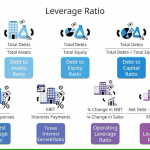Chief Financial Officers (CFOs) play a pivotal role in navigating the intricate landscape of financial engineering. These financial leaders are responsible for overseeing the overall financial health and performance of their organizations, and their ability to effectively leverage financial engineering techniques can have a significant impact on shareholder value.
CFOs are tasked with the crucial responsibility of aligning their organization’s financial strategies with its broader business objectives. This requires a deep understanding of the financial markets, a keen eye for identifying opportunities, and the ability to make strategic decisions that balance risk and reward. By employing financial engineering, CFOs can unlock hidden value, optimize capital structure, and drive sustainable growth, all while ensuring the long-term success of their organizations.
The role of CFOs in financial engineering extends beyond traditional financial management. They must possess a comprehensive understanding of various financial instruments, derivatives, and risk management strategies. This knowledge allows them to navigate complex financial landscapes, identify and mitigate potential risks, and capitalize on market opportunities. Furthermore, CFOs must be adept at financial modeling, forecasting, and strategic decision-making to ensure that their organizations remain agile and responsive to changing market conditions.
Understanding Shareholder Value
At the heart of financial engineering lies the fundamental objective of maximizing shareholder value. Shareholders, as the owners of a company, expect a return on their investment in the form of dividends, capital appreciation, or both. Top CFOs understand that their primary responsibility is to create value for these shareholders, and they employ financial engineering as a powerful tool to achieve this goal.
Shareholder value is a multifaceted concept that encompasses various financial metrics, such as earnings per share (EPS), return on equity (ROE), and free cash flow. CFOs must be able to analyze these metrics, identify areas for improvement, and implement strategies that drive sustainable growth and profitability. By optimizing the capital structure, managing risk effectively, and exploring new revenue streams, CFOs can enhance the overall financial performance of their organizations, ultimately benefiting the shareholders.
Moreover, CFOs must consider the long-term implications of their financial decisions. They must balance the short-term needs of the business with the long-term strategic goals, ensuring that the decisions they make today will continue to create value for shareholders in the future. This requires a deep understanding of market trends, industry dynamics, and the evolving needs of shareholders, all of which are essential in navigating the complex world of financial engineering.
The Objectives of Financial Engineering
Financial engineering is a multifaceted discipline that encompasses a wide range of techniques and strategies aimed at optimizing financial performance and creating value for shareholders. At its core, the objectives of financial engineering can be broadly categorized into three key areas: risk management, capital structure optimization, and value creation.
Risk management is a critical component of financial engineering, as CFOs must ensure that their organizations are well-equipped to navigate the inherent risks of the financial markets. By leveraging financial instruments such as derivatives, hedging strategies, and diversification techniques, CFOs can mitigate the impact of market volatility, interest rate fluctuations, and other financial risks. This not only protects the organization’s assets but also provides a stable foundation for long-term growth and value creation.
Capital structure optimization is another key objective of financial engineering. CFOs must carefully balance the use of debt and equity financing to achieve the optimal capital structure that aligns with the organization’s strategic goals and risk appetite. This may involve the use of innovative financing techniques, such as bond issuances, securitization, or the strategic deployment of cash reserves. By optimizing the capital structure, CFOs can reduce the cost of capital, improve financial ratios, and unlock hidden value for shareholders.
The ultimate objective of financial engineering, however, is to create value for shareholders. CFOs must explore and implement strategies that enhance the organization’s financial performance, increase profitability, and drive sustainable growth. This may involve the use of financial modeling, valuation techniques, and strategic decision-making to identify and capitalize on market opportunities, diversify revenue streams, and improve operational efficiency. By focusing on value creation, top CFOs can ensure that their organizations remain competitive and continue to deliver strong returns to their shareholders.
Strategies for Maximizing Shareholder Value
As CFOs navigate the complex world of financial engineering, they employ a range of strategies to maximize shareholder value. These strategies encompass both short-term and long-term approaches, and they are tailored to the unique needs and challenges of each organization.
One of the key strategies employed by top CFOs is the optimization of the capital structure. By carefully balancing the use of debt and equity financing, CFOs can reduce the overall cost of capital, improve financial ratios, and enhance the organization’s ability to weather economic fluctuations. This may involve the strategic use of debt instruments, such as bonds or loans, or the implementation of equity-based financing, such as stock buybacks or dividend policies.
Another crucial strategy is the effective management of risk. CFOs must identify and mitigate the various financial risks facing their organizations, whether it’s market volatility, interest rate fluctuations, or currency exchange risks. By leveraging financial instruments like derivatives, hedging strategies, and diversification techniques, CFOs can protect the organization’s assets and ensure a stable financial foundation for long-term growth.
In addition to these foundational strategies, top CFOs also explore innovative approaches to value creation. This may involve the strategic deployment of cash reserves, the identification and capitalization of new revenue streams, or the optimization of operational efficiency through the use of financial modeling and data analytics. By continuously seeking out new opportunities and adapting to changing market conditions, CFOs can ensure that their organizations remain agile and responsive, ultimately delivering greater value to their shareholders.
Key Tools and Techniques Used in Financial Engineering
Financial engineering is a complex and multifaceted discipline that requires a comprehensive toolkit of specialized tools and techniques. Top CFOs are adept at leveraging a wide range of financial instruments and analytical methods to navigate the intricate world of financial engineering and maximize shareholder value.

One of the foundational tools in financial engineering is financial modeling. CFOs and their teams utilize sophisticated financial models to analyze historical data, forecast future performance, and simulate various scenarios. These models can be used to evaluate the impact of different financing strategies, assess the risk-return profile of investments, and optimize the capital structure of the organization.
Another essential tool in the financial engineering toolkit is derivative instruments, such as options, futures, and swaps. These financial instruments allow CFOs to manage risk, hedge against market fluctuations, and capitalize on opportunities. By leveraging derivatives, CFOs can protect the organization’s assets, stabilize cash flows, and create new revenue streams that contribute to shareholder value.
In addition to these financial instruments, top CFOs also employ a range of analytical techniques to support their decision-making process. This includes techniques like discounted cash flow (DCF) analysis, capital asset pricing model (CAPM), and modern portfolio theory (MPT). These analytical methods provide CFOs with a deeper understanding of the organization’s financial performance, risk profile, and investment opportunities, enabling them to make more informed and strategic decisions.
Case Studies of Successful Financial Engineering
To illustrate the power of financial engineering in maximizing shareholder value, let’s examine a few case studies of top CFOs who have successfully navigated this complex landscape.
Case Study 1: General Electric’s Transformation under CFO Jeff Immelt
During his tenure as CFO of General Electric (GE), Jeff Immelt implemented a comprehensive financial engineering strategy to transform the company and create significant value for shareholders. Recognizing the need to streamline GE’s diversified business portfolio, Immelt spearheaded a series of strategic divestitures and acquisitions, shedding underperforming assets and investing in high-growth sectors. This strategic repositioning allowed GE to focus on its core competencies, improve operational efficiency, and enhance its financial performance.
Immelt also employed innovative financing techniques, such as the use of hybrid securities and the strategic deployment of GE’s vast cash reserves. By optimizing the capital structure, Immelt was able to reduce the company’s cost of capital and improve its financial ratios, ultimately enhancing shareholder value. Additionally, Immelt’s focus on risk management, including the use of hedging strategies and diversification, helped GE navigate the turbulent financial markets during his tenure.
Under Immelt’s leadership, GE’s stock price soared, and the company delivered strong returns to its shareholders. This case study demonstrates the transformative power of financial engineering when executed by a skilled and visionary CFO like Jeff Immelt.
Case Study 2: Microsoft’s Shareholder Value Creation under CFO Amy Hood
Amy Hood, the CFO of Microsoft, has been widely recognized for her strategic approach to financial engineering and her ability to drive shareholder value. Upon taking on the CFO role, Hood implemented a comprehensive capital allocation strategy that focused on optimizing the company’s balance sheet and returning excess cash to shareholders.
One of Hood’s key initiatives was the implementation of a robust share repurchase program, which allowed Microsoft to return billions of dollars to its shareholders. This, coupled with a disciplined approach to dividend payments, demonstrated Hood’s commitment to enhancing shareholder value. Additionally, Hood’s strategic deployment of Microsoft’s cash reserves, including strategic investments and acquisitions, further strengthened the company’s financial position and growth prospects.
Under Hood’s leadership, Microsoft’s stock price has consistently outperformed the broader market, and the company has maintained a strong financial profile. This case study highlights the importance of a well-executed financial engineering strategy in driving sustainable shareholder value, even in a mature and established technology company like Microsoft.
Challenges and Risks in Financial Engineering
While financial engineering can be a powerful tool for maximizing shareholder value, it is not without its challenges and risks. Top CFOs must navigate a complex and constantly evolving financial landscape, balancing the potential rewards with the inherent risks associated with financial engineering.
One of the primary challenges faced by CFOs is the need to stay ahead of the curve in terms of market trends, regulatory changes, and technological advancements. The financial landscape is constantly in flux, and CFOs must be agile and adaptable to respond to these changes effectively. This requires a deep understanding of the financial markets, a keen eye for identifying emerging risks and opportunities, and the ability to make strategic decisions under uncertainty.
Another key challenge is the management of risk. Financial engineering often involves the use of complex financial instruments and strategies, which can expose the organization to a range of risks, such as market volatility, counterparty risk, and liquidity risk. CFOs must carefully assess and mitigate these risks, ensuring that the potential rewards outweigh the potential downsides.
Additionally, CFOs must navigate the complex web of regulations and compliance requirements that govern the financial industry. Failure to comply with these regulations can result in significant legal and financial consequences, undermining the organization’s reputation and shareholder value. CFOs must stay up-to-date with regulatory changes, implement robust compliance frameworks, and ensure that their financial engineering strategies are aligned with the relevant laws and regulations.
The Role of Technology in Financial Engineering
In the rapidly evolving world of finance, technology has become an indispensable tool for CFOs navigating the complexities of financial engineering. The integration of advanced technologies, such as artificial intelligence (AI), machine learning (ML), and data analytics, has revolutionized the way CFOs approach financial decision-making and shareholder value creation.
One of the key ways technology is transforming financial engineering is through the use of sophisticated financial modeling and simulation tools. These tools allow CFOs to analyze vast amounts of data, identify patterns and trends, and simulate the impact of various financial strategies on the organization’s performance. By leveraging the power of AI and ML, CFOs can make more informed and data-driven decisions, ultimately enhancing their ability to maximize shareholder value.
Another area where technology is playing a crucial role is in the management of financial risk. CFOs can now leverage advanced analytics and real-time data to monitor and mitigate a wide range of financial risks, from market volatility to counterparty risk. By automating risk management processes and leveraging predictive analytics, CFOs can make more informed decisions, reduce the organization’s exposure to financial risks, and protect shareholder value.
Moreover, the integration of technology has also enabled CFOs to streamline and optimize their financial engineering strategies. Through the use of cloud-based platforms, CFOs can access a wide range of financial tools and resources, collaborate with their teams more effectively, and automate repetitive tasks. This allows them to focus on strategic decision-making and the implementation of innovative financial engineering techniques, further enhancing their ability to create value for shareholders.
Conclusion and Key Takeaways
In the dynamic and ever-evolving world of finance, top CFOs have emerged as the masters of financial engineering, leveraging their expertise and strategic vision to maximize shareholder value. By understanding the fundamental objectives of financial engineering, such as risk management, capital structure optimization, and value creation, these CFOs have demonstrated their ability to navigate complex financial landscapes and deliver exceptional results for their organizations.
The key takeaways from this exploration of how top CFOs navigate financial engineering include:
- The critical role of CFOs in aligning financial strategies with broader business objectives and creating value for shareholders.
- The importance of understanding and effectively managing the various components of shareholder value, including financial metrics, capital structure, and long-term growth.
- The multifaceted objectives of financial engineering, encompassing risk management, capital structure optimization, and value creation.
- The strategic approaches employed by top CFOs to maximize shareholder value, such as capital structure optimization, risk management, and innovative value creation strategies.
- The specialized tools and techniques used in financial engineering, including financial modeling, derivative instruments, and advanced analytical methods.
- The challenges and risks associated with financial engineering, such as market volatility, regulatory changes, and the need for agility and adaptability.
- The transformative role of technology in enhancing the capabilities of CFOs in financial engineering, from data-driven decision-making to streamlined risk management.
As the financial landscape continues to evolve, the role of CFOs in navigating financial engineering and maximizing shareholder value will only become more critical. By embracing the strategies and techniques employed by the top CFOs, organizations can position themselves for long-term success and deliver exceptional returns to their shareholders.






